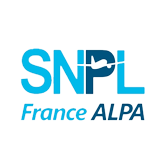
Position Paper IFALPA: Transparency in Safety Management Systems
Transparency in Safety Management Systems (SMS) is imperative to the overall success of the program. It is essential for open, fair, and traceable processes. It promotes clear communication of safety-related information, data integrity, and openness in decision- making. It also provides feedback for safety reporting, which serves as an incentive for a Positive Safety Culture (...)
Press release IFALPA – Industry reaffirms commitment to safe, secure, and sustainable growth
Commemorating the 80th anniversary of the Chicago Convention, the global aviation industry presented a unified declaration to the International Civil Aviation Organization (ICAO) today, underscoring a shared commitment to advancing the safe, secure, and sustainable growth of international aviation. Signed by major industry associations, the declaration represents a collective pledge to support ICAO’s mission and ensure that aviation continues to serve as an integral part of a thriving, connected, inclusive and affordable global transportation system for people and goods (...)
IFALPA Welcomes MoU Between ALPA-Korea and MOLIT
MONTREAL – The International Federation of Air Line Pilots’ Associations (IFALPA) is pleased to announce a significant development in aviation safety, the official signing of a Memorandum of Understanding (MoU) between ALPA-Korea (ALPA-K) and the Ministry of Land, Infrastructure and Transport (MOLIT) of the Republic of Korea. This momentous agreement sees four IFALPA-accredited Accident Investigators from ALPA-K appointed as Official Advisors to MOLIT, further enhancing the country’s aviation safety efforts. The MoU was signed at a ceremony in Seoul on November 20, 2024, with the participation of Ms. Kim, the Director-General of MOLIT, and Captain Lee ChoongSub, President of ALPA-K and IFALPA Regional Vice-President for North Pacific (NOP). This agreement marks a major milestone in the collaboration between the government and the pilot community to improve flight safety in Korea, and worldwide (...)
Safety Bulletin IFALPA: Implementation of Oceanic Clearance Removal – North Atlantic except for Shanwick
North Atlantic airspace includes the following airspace: New York Oceanic East (KZWY), Gander (CZQX), Reykjavik (BIRD), Bodø (above FL195) (ENOB), Shanwick (EGGX) and Santa Maria (LPPO). On 4 December 2024, all airspace in the NAT (North America track) system will have implemented the oceanic clearance removal (OCR) procedure, with the exception of Shanwick airspace. Under the OCR procedure, crews are required to submit the request for clearance (this procedure has remained unchanged). The flight will receive a message back, “RCL received by XXX.” This message will be sent from the airspace to which the RCL was submitted prior to oceanic entry (...)
Joint Industry Statement on the Misuse of International Aeronautical Emergency Frequency 121.5 MHz
The Civil Air Navigation Services Organisation (CANSO), the International Air Transport Association (IATA), the International Federation of Air Line Pilots' Associations (IFALPA) and the International Federation of Air Traffic Controllers' Associations (IFATCA) have come together to issue this critical joint statement addressing the misuse of the International Aeronautical Emergency Frequency 121.5 MHz. This frequency, reserved exclusively for emergency communications, is vital to ensuring swift responses to distress situations. The inappropriate use of this frequency may pose a serious risk to flight safety, delaying critical assistance to those in need. We urge all aviation stakeholders to carefully consider the importance of safeguarding this frequency and to take immediate steps to ensure it is used strictly for its intended purposes.
Position Paper IFALPA: Pilot Participation in Safety Risk Assessments
IFALPA strongly supports the implementation and execution of thorough risk assessments by safety departments to ensure in-depth safety analysis. Most current risk assessment practices do not include pilot safety advocates from the Member Association. IFALPA recognizes the vital role of these frontline pilots in ensuring the highest standards of aviation safety. The positive effect on flight safety through risk assessments in the context of a functioning safety management system is well recognized (...)
Safety Bulletin IFALPA: Mpox Outbreak Information for Pilots
This bulletin is intended for informational purposes only. In all cases, please follow the guidance of your operator, regulator, and national laws. The World Health Organization (WHO) has just determined that the upsurge of Mpox in the Democratic Republic of Congo (DRC) constitutes a Public Health Emergency of International Concern (PHEIC), following the emergence and rapid spread of a new virus strain. Several outbreaks of Mpox have occurred in different countries, with different modes of transmission and different levels of risk.
Pilots from ECA take a stand against Single Pilot flights
European planes could be operating with only one pilot at the controls as soon as 2027, if moves by aircraft manufacturers are successful. To take a stand against this, European pilots led by the European Cockpit Association (ECA) have launched a new website: OneMeansNone.eu. The platform aims to inform passengers about the significant safety risks associated with reducing crew from two pilots to one.
IFALPA Briefing Leaflet: Yellow Fever Information for Pilots
IFALPA has updated information for Pilots on Yellow Fever. Please review carefully and, as always, be aware of the regulations and expectations of your operator/employer, and those of your local health authority.
IFALPA Briefing Leaflet: Enhancing Pilot Monitoring
IFALPA recognizes the critical roles of Pilot Flying (PF) and Pilot Monitoring (PM) as foundational elements in flight deck operations. While the aviation industry has established clear definitions and responsibilities for these specific roles, IFALPA advocates for a renewed focus on the monitoring tasks associated with both the pilot flying and monitoring positions during all phases of flight. This leaflet aims to highlight the pilot monitoring tasks, supporting flight safety and operational efficiency, and introduce tools for enhancing its effectiveness in the cockpit. This briefing also introduces a theoretical background on human perception, cognition, and a model of situational awareness for pilot monitoring tasks. It then describes five tools designed to enhance monitoring effectiveness and their real-world applications. The reader is invited either to review the complete document or to review the tools individually, with references to the theoretical background where necessary.
